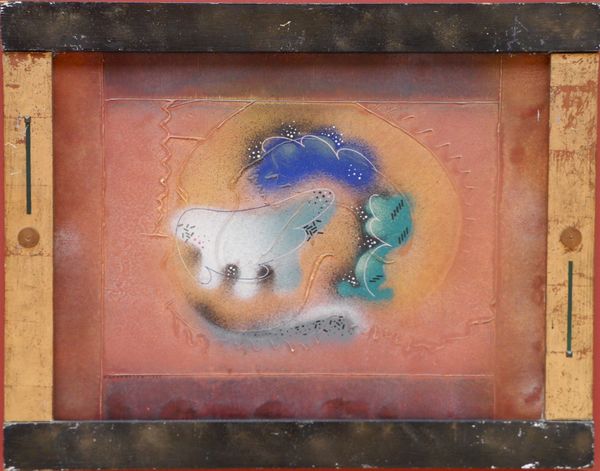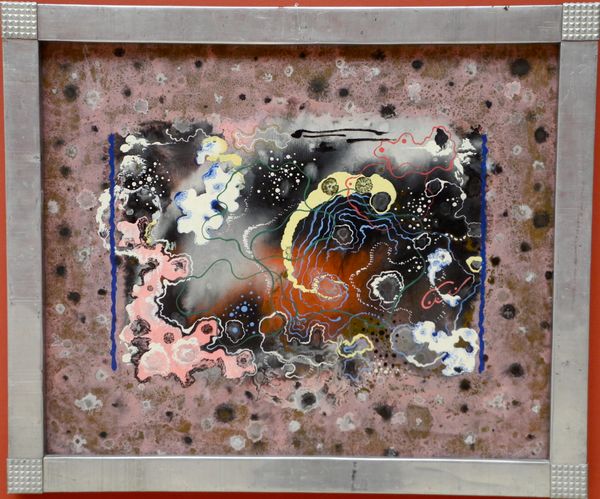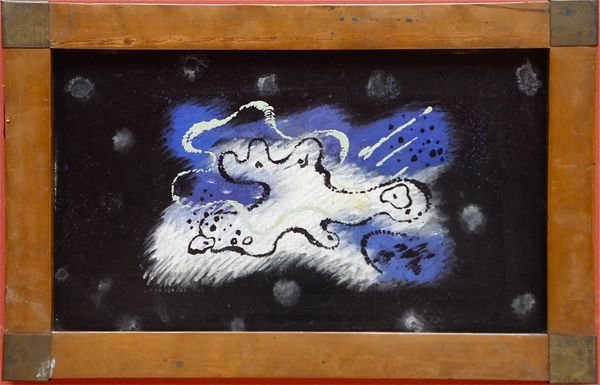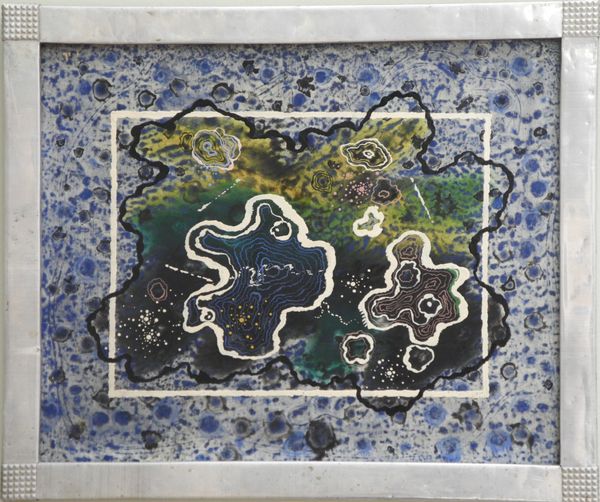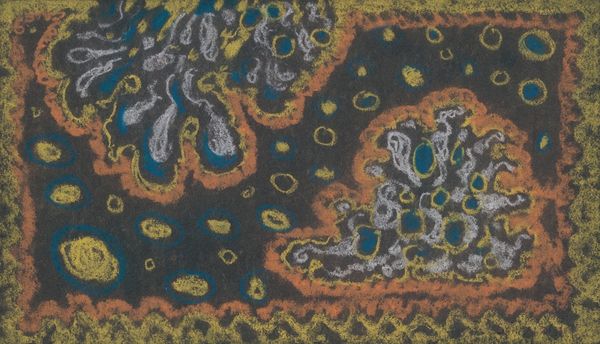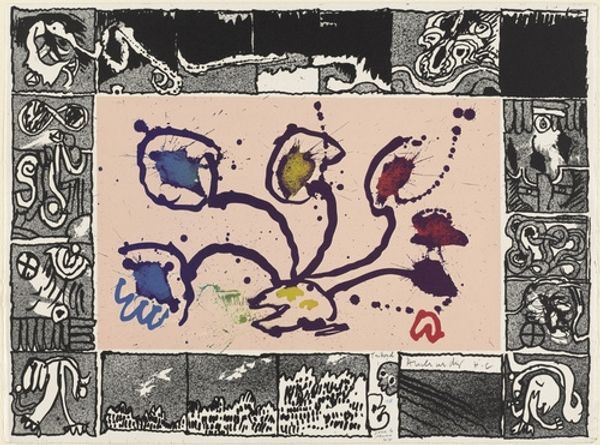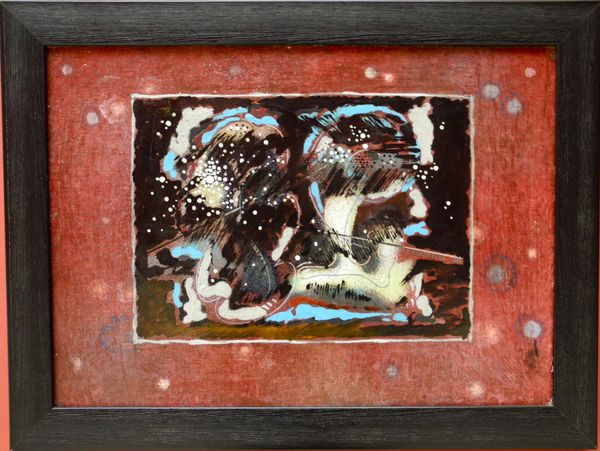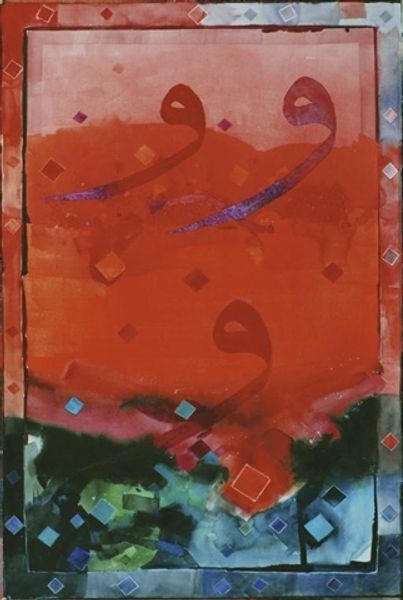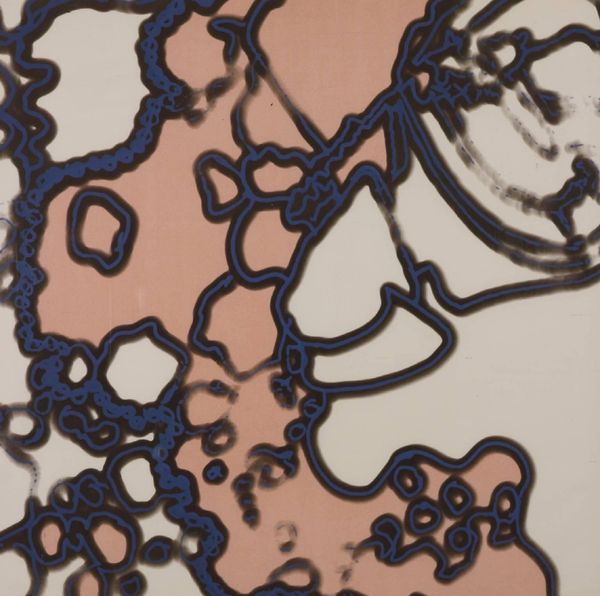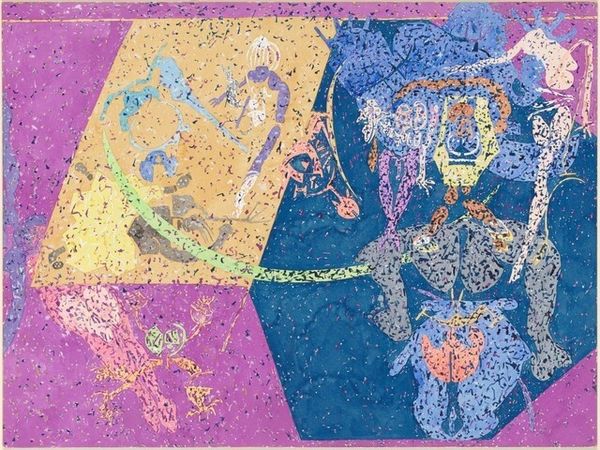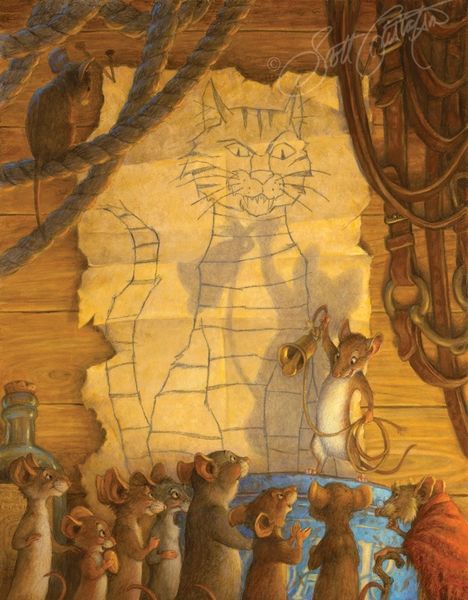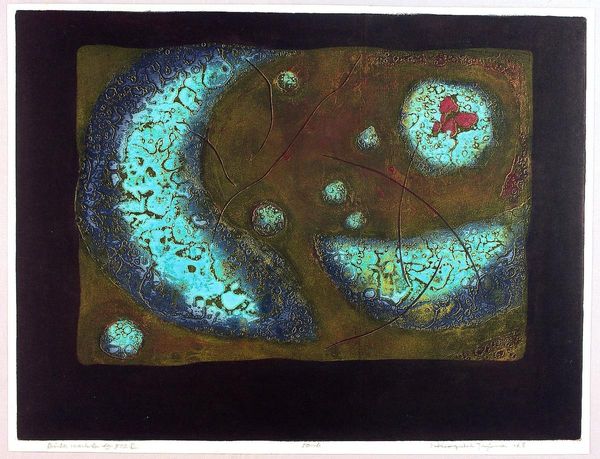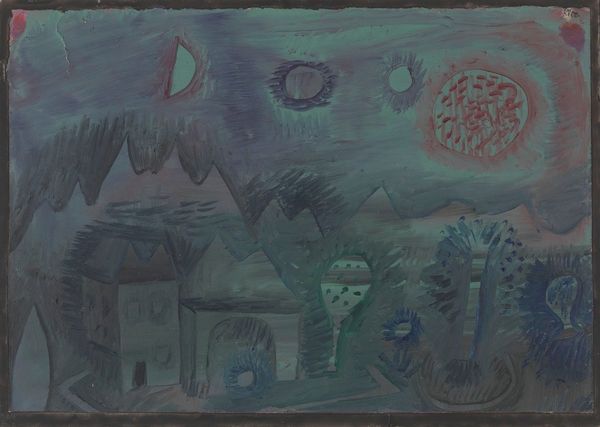
watercolor
#
abstract painting
#
water colours
#
watercolor
#
naive art
#
geometric-abstraction
#
abstraction
#
modernism
#
watercolor
Copyright: David Kakabadze,Fair Use
Editor: So this is David Kakabadze’s “Abstraction,” created in 1926 using watercolor. It’s privately owned, so it’s really a treat to see it here today. I find it incredibly dynamic, like looking into the heart of an explosion. All of the shapes, and their arrangement create such energy. What elements stand out to you? Curator: The distribution of value creates an immediately engaging dynamism. Note the dark ground against which lighter forms advance toward the viewer. Moreover, Kakabadze’s composition presents us with several layers of activity. Linear elements establish boundaries, define the edges of forms, and then weave within the established spaces. It prompts one to consider: How do these diverse visual elements relate to each other and contribute to the overall unity of the painting? Editor: So, it is the relationship between color and line and its depth of layers that he’s playing with the most here? Curator: Precisely. Focus on the chromatic scale and the contrast between colors: what impact do the watercolor’s diluted pigments have, combined with bold lines? Consider the push and pull between organic shapes and geometric forms as they function within the composition. What meanings arise from their co-existence? Editor: The watercolor is indeed so subtle. Almost accidental and yet completely controlled, creating so much controlled intensity. All that structure holds the energy within. That's remarkable. Curator: The balance of planned construction and intuitive arrangement is striking. Kakabadze’s abstract language utilizes flatness to create ambiguous space. Editor: Thank you. I am seeing it with fresh eyes, focusing on just form and its semiotics and impact now! Curator: Indeed, the artist offers a complex language. Hopefully listeners will now come to view “Abstraction” and bring fresh considerations as well.
Comments
No comments
Be the first to comment and join the conversation on the ultimate creative platform.
